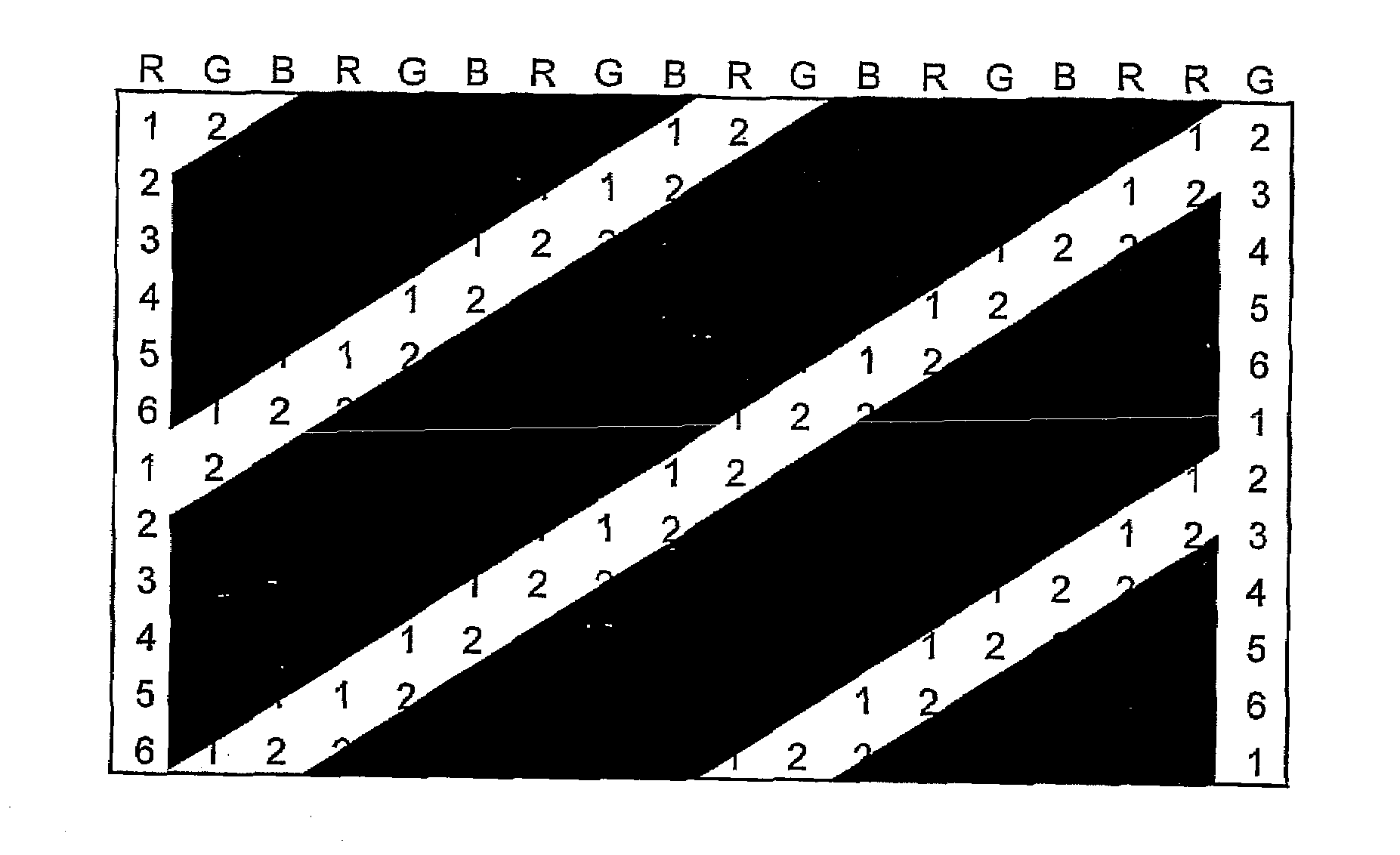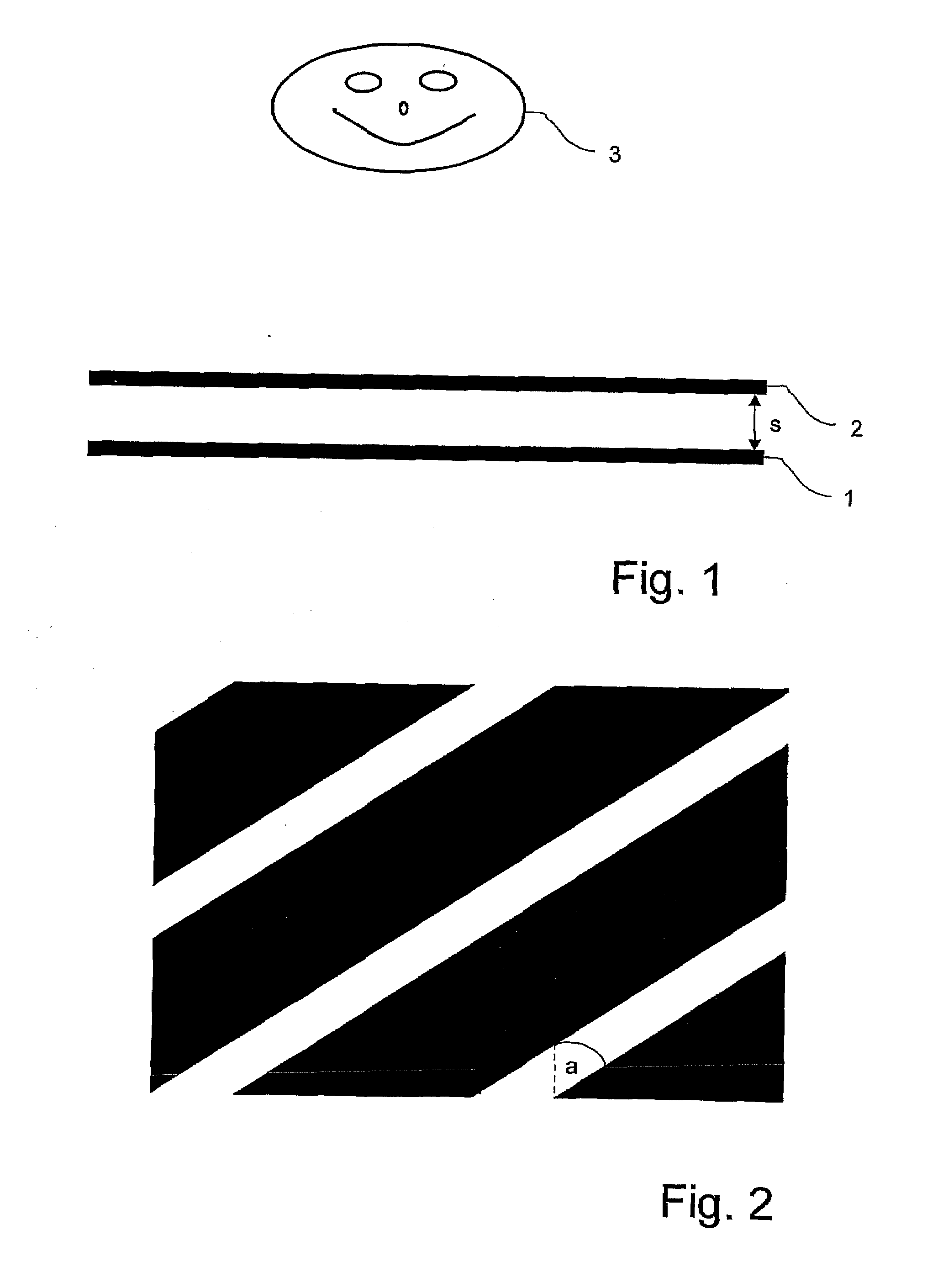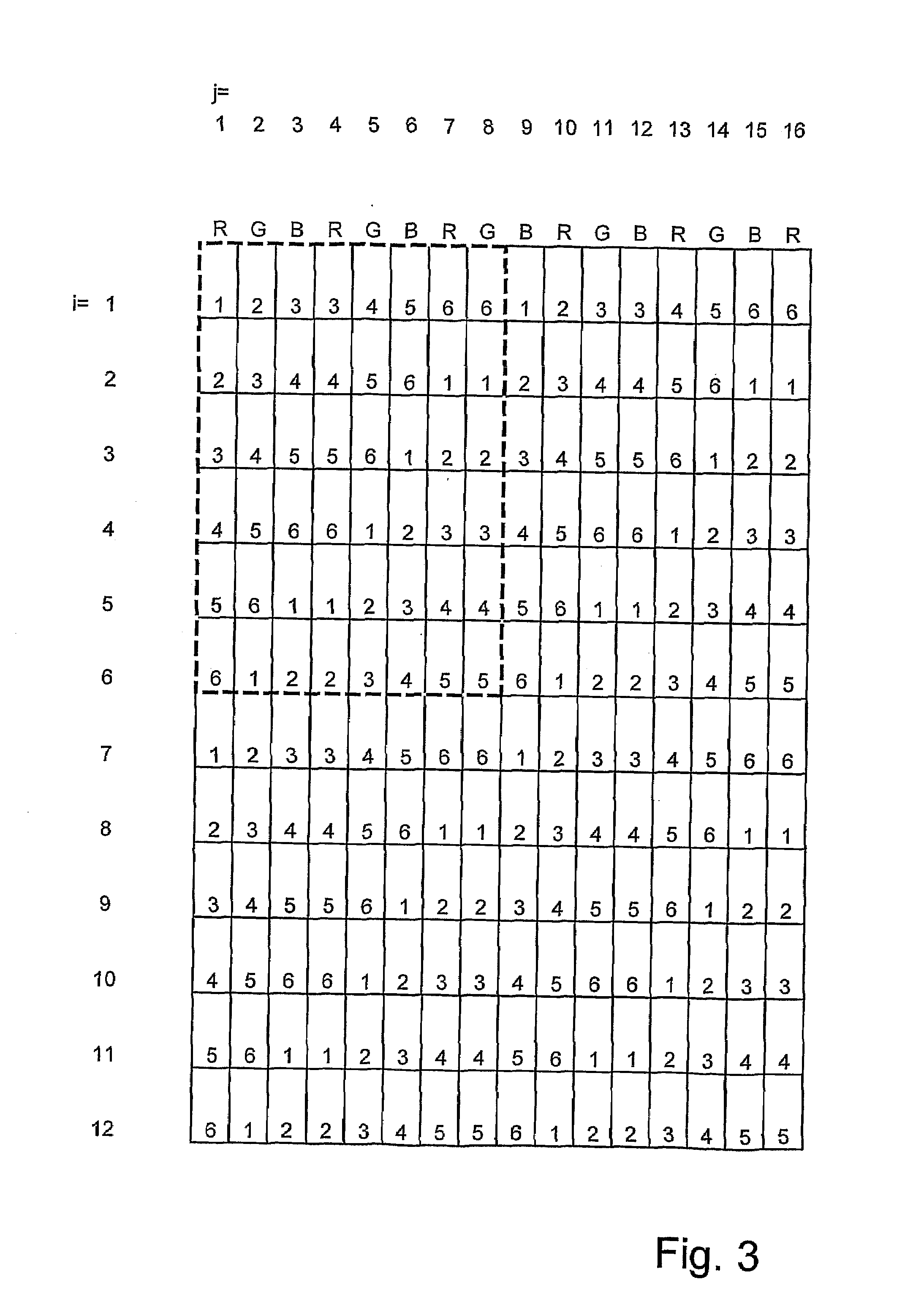Method and arrangement for three-dimensional representation
a three-dimensional system and display technology, applied in the field of spatial representation, can solve the problems of reducing the brightness of this type of 3-d system in comparison with a 2-d display, lenticular lenses, and high light loss, and achieve the effect of improving the perceptibility of multiple simultaneous viewers
- Summary
- Abstract
- Description
- Claims
- Application Information
AI Technical Summary
Benefits of technology
Problems solved by technology
Method used
Image
Examples
Embodiment Construction
[0049]The drawings are not to scale. This refers in particular also to the angular dimensions.
[0050]FIG. 1 shows a schematic structure for realizing the method of the invention. This includes a grid 1 of image elements x(i,j), on which image section data of different viewpoints A(k) with k=1, . . . , n and n=6 or n=7 are made visible, and a parallax barrier screen 2 placed before grid 1 of image elements x(i,j) at the distance s in viewing direction of a viewer 3. Of course, there can also be several viewers 3 who-obtain a spatial impression based on the method of the invention.
[0051]FIG. 2 shows a section of a parallax barrier screen 2 for use in the method of the invention. This parallax barrier screen 2 contains alternately opaque and transparent sections, whereby the transparent sections according to the invention correspond substantially to straight bordered lines, which in parallel projection of parallax barrier screen 2 onto grid 1 of image elements x(i,j) are inclined by at ...
PUM
 Login to View More
Login to View More Abstract
Description
Claims
Application Information
 Login to View More
Login to View More - R&D
- Intellectual Property
- Life Sciences
- Materials
- Tech Scout
- Unparalleled Data Quality
- Higher Quality Content
- 60% Fewer Hallucinations
Browse by: Latest US Patents, China's latest patents, Technical Efficacy Thesaurus, Application Domain, Technology Topic, Popular Technical Reports.
© 2025 PatSnap. All rights reserved.Legal|Privacy policy|Modern Slavery Act Transparency Statement|Sitemap|About US| Contact US: help@patsnap.com



